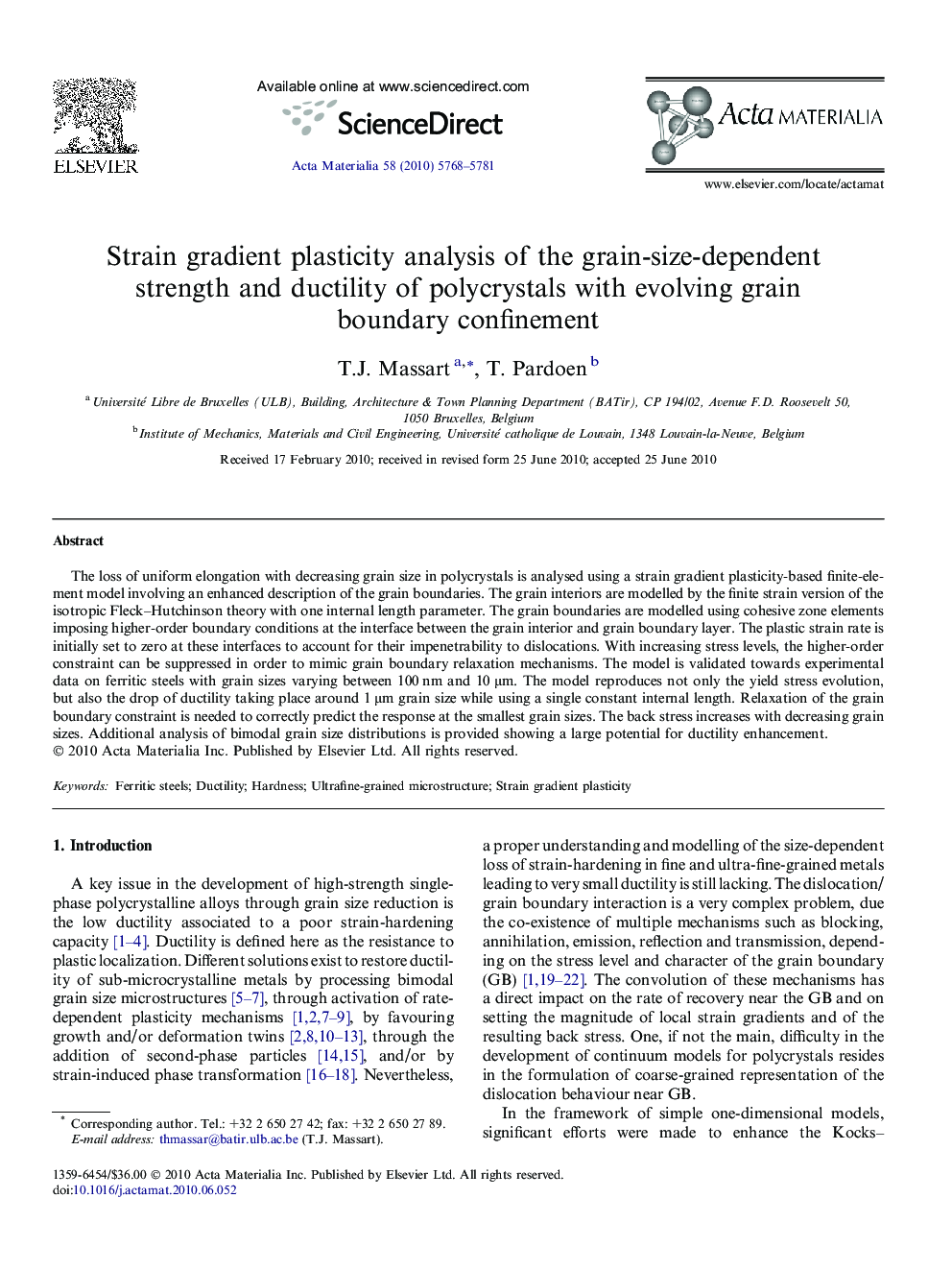| Article ID | Journal | Published Year | Pages | File Type |
|---|---|---|---|---|
| 10620726 | Acta Materialia | 2010 | 14 Pages |
Abstract
The loss of uniform elongation with decreasing grain size in polycrystals is analysed using a strain gradient plasticity-based finite-element model involving an enhanced description of the grain boundaries. The grain interiors are modelled by the finite strain version of the isotropic Fleck-Hutchinson theory with one internal length parameter. The grain boundaries are modelled using cohesive zone elements imposing higher-order boundary conditions at the interface between the grain interior and grain boundary layer. The plastic strain rate is initially set to zero at these interfaces to account for their impenetrability to dislocations. With increasing stress levels, the higher-order constraint can be suppressed in order to mimic grain boundary relaxation mechanisms. The model is validated towards experimental data on ferritic steels with grain sizes varying between 100 nm and 10 μm. The model reproduces not only the yield stress evolution, but also the drop of ductility taking place around 1 μm grain size while using a single constant internal length. Relaxation of the grain boundary constraint is needed to correctly predict the response at the smallest grain sizes. The back stress increases with decreasing grain sizes. Additional analysis of bimodal grain size distributions is provided showing a large potential for ductility enhancement.
Related Topics
Physical Sciences and Engineering
Materials Science
Ceramics and Composites
Authors
T.J. Massart, T. Pardoen,
